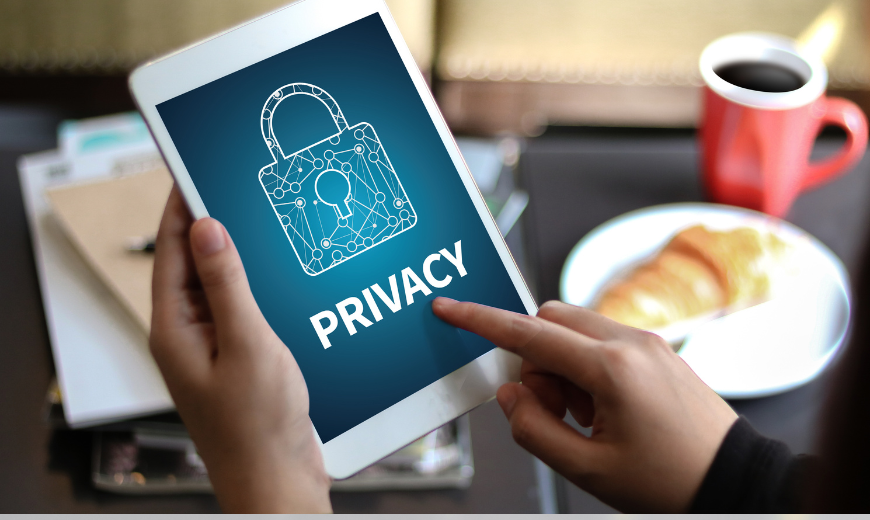
Dear readers! Do you ever feel like you are being tracked while scrolling through social media feeds? Our own entities record our every like, comment, and purchase. Centralized platforms dominate today, but our data on those platforms is more vulnerable than ever. Data privacy and security issues have become unpredictable as these platforms collect information. Just think about it: browsing online while your every move is tracked, stored, and maybe being exploited. All of this is happening without your consent and with a level of control that causes serious issues.
This fight for data privacy feels like a tough battle. But if we say there could be a technical solution to this problem. Blockchain Technology incorporates a decentralized system with a massive potential to re-establish data ownership rules. Blockchain has a ledger system that ensures transparency and immutability within the system. But is it really possible? In the center of this network, Blockchain shifts data ownership and empowers individuals with control over their data.
We can at least say that it’s a life-changing concept and offers some hope. However, there are many things that need to be considered while navigating the complex world of Blockchain. Getting through this complicated dilemma requires examining rights, responsibilities, and the practical work of decentralized data management. In this web blog, we will shed some light on the future of data privacy in a decentralized world.
Ongoing Data Privacy Development on Blockchain
With decentralized technology at our disposal, we have more control over our personal information. But how can we ensure that user privacy remains intact in this system?
There are a few developments that might prove beneficial for the future of data privacy in Blockchain:
1. Privacy-Strengthening Tech: In decentralized networks, cryptographic developments like zero-knowledge proofs have a lot of potential. This technology verifies information on a Blockchain without revealing the real data. It’s just like proving to a system that you’re 18 years old without showing them your date of birth details. It sounds too good to be true.
2. Self-sovereign identity (SSI): This idea lets individuals manage their online identities on Blockchain. It’s like having an online passport with the only information you want to share for a particular objective.
3. Interoperable Standards: They enable the operations processes that are important for facilitating data portability and user control.
Although technological development offers are enticing with various possibilities, regulations and best practices should be maintained:
- Regulatory Framework: Clair guidelines are important to resolve data privacy concerns in the Blockchain. This framework should maintain a balance between innovation and securing user data.
- Standardized Security Practices: Privacy loopholes can expose user data on Blockchains, so it’s important to develop strong security protocols and promote best security practices.
Who Owns Your Data on a Blockchain?
The decentralized nature of blockchain technology interrupts the traditional model of data ownership. Unlike centralized platforms, where a single entity controls user data, blockchains offer a more distributed approach. Let’s explore the complexities of data ownership on a blockchain.
Distributed Data Storage
Imagine a world where your data isn’t locked away in a single server. That’s the essence of blockchain data storage. Here, information isn’t kept in one central location; instead, it’s replicated across numerous computers (nodes) that participate in the network. Every node maintains a copy of the entire blockchain, ensuring security.
This distributed storage system has various consequences for data ownership:
User Control Through Private Keys
The key to your data on a blockchain lies in cryptography. Users hold private keys, acting like digital passports, that control access to their data. These keys are crucial for signing transactions and proving ownership of the information associated with a specific blockchain address.
Public by Design, Private Access
Here’s where things get interesting. While users own the private keys to their data, the actual data itself might be publicly viewable on a public blockchain. Take Bitcoin, for example. Transaction history is accessible to anyone on the network. This transparency of blockchain, builds trust and immutability.
However, publicly viewable data doesn’t necessarily equate to a privacy nightmare. Transaction history on Bitcoin doesn’t reveal real names; instead, it showcases pseudonymous wallet addresses. But the concern remains – the data itself is out there, although not directly linked to a person’s identity.
Permissioned Blockchains
Public blockchains offer transparency and security, but raise concerns over complete data privacy. This is where permissioned blockchains emerge as an alternative. These private or consortium blockchains restrict access to authorized participants, potentially offering more control over data visibility.
Think of a permissioned blockchain like a private club. Only approved members can see the data on the network, allowing for a more controlled environment where sensitive information can be shared securely.
Wrapping Up with a Balancing Act
Data ownership on a blockchain is a complex issue. Users own the private keys granting access to their data, but the data itself might be publicly viewable on a public blockchain. Permissioned blockchains offer a potential solution for situations requiring stricter data control. Ultimately, the balance between data privacy and transparency on blockchains remains a work in progress. As the technology evolves, so will solutions for protecting user data while using the power of decentralization.
The good news is that blockchain technology offers a major shift from centralized data control. Users have the potential to become true owners of their information. Users are empowered to decide who can access and use it. Permissioned blockchains also shows the potential for a more controlled environment when dealing with sensitive data. However, the evolution of data privacy solutions on blockchains is ongoing. There’s a need for ongoing development and potentially even regulations to ensure user data is protected while leveraging the benefits of decentralization.
Blockchain technology holds immense promise for a future where users have more control over their data privacy. As this technology matures, we can expect different solutions, striking a balance between transparency and user control. The journey towards a more user-centric approach to data privacy in a decentralized world has begun, and blockchain is a key player in this exciting new chapter.
Does a decentralized system solve our security and privacy puzzle? What are your thoughts on this? Please share with us in the comment section below.
Stay tuned with the Blockchainist for more relevant content on Blockchain technology.






